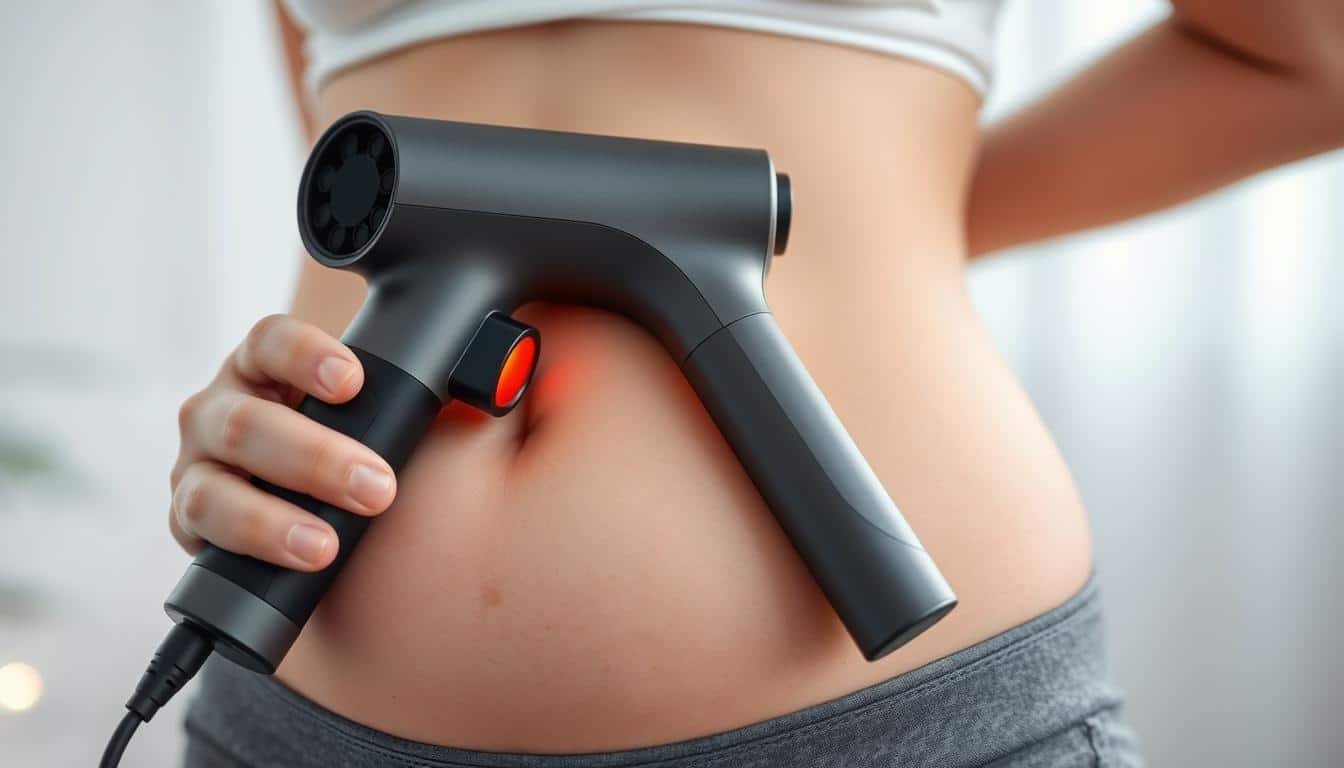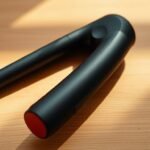Picture this: You’ve just finished Thanksgiving dinner, and your cousin proudly whips out their new “wellness gadget” to tackle the post-feast bloat. What starts as a curious experiment quickly turns into a group debate – should we really be buzzing our midsections like this? Turns out, half your family thinks it’s genius, while the other half is convinced it’s a one-way ticket to regret.
This modern dilemma isn’t just happening at holiday tables. Wellness enthusiasts and skeptics alike are buzzing (pun intended) about whether these powerful tools belong near our delicate abdominal regions. While some swear by the digestive benefits and muscle relief, others warn about potential risks that could turn your self-care routine into a cautionary tale.
We’ve dug through medical journals, grilled physical therapists, and even tested techniques (safely, we promise) to separate fact from fad. What we found might surprise you – there’s science behind the buzz, but also some serious ground rules. From attachment choices to pressure points, the difference between helpful and harmful comes down to smarter strategies than you’d expect.
Key Takeaways
- Abdominal areas require gentler approaches than other muscle groups
- Medical consultation is crucial for pregnant individuals or recent surgery patients
- Specific attachments make all the difference for safe application
- Short sessions (2-5 minutes) maximize benefits without risks
- Proper technique can aid digestion and reduce tension when done correctly
Introduction and Overview
Let’s face it: We’ve all been tempted to test our recovery tools in unconventional ways. That’s why we’re slicing through the noise around percussive therapy for delicate regions – think less “jackhammer approach” and more “precision artist”.
Article Purpose and Scope
We’re your myth-busting crew for this journey. Our mission? To unpack whether vibrating devices belong near sensitive zones without turning you into a cautionary meme. You’ll get science-backed insights on tension relief versus potential red flags, served with zero marketing fluff.
What to Expect in Our How-To Guide
Consider this your roadmap to smarter recovery tactics. We’re breaking down:
- Attachment types that won’t leave you cross-eyed
- Pressure sweet spots for digestive support
- Timing tricks that prevent overzealous buzzing
One physical therapist put it best: “It’s like using a chainsaw for bonsai trimming – technique matters more than power.” We’ll show you how to harness the benefits without the “oops” moments, whether you’re tackling post-workout tightness or holiday feast aftermath.
Understanding Percussive Therapy for Abdominal Health
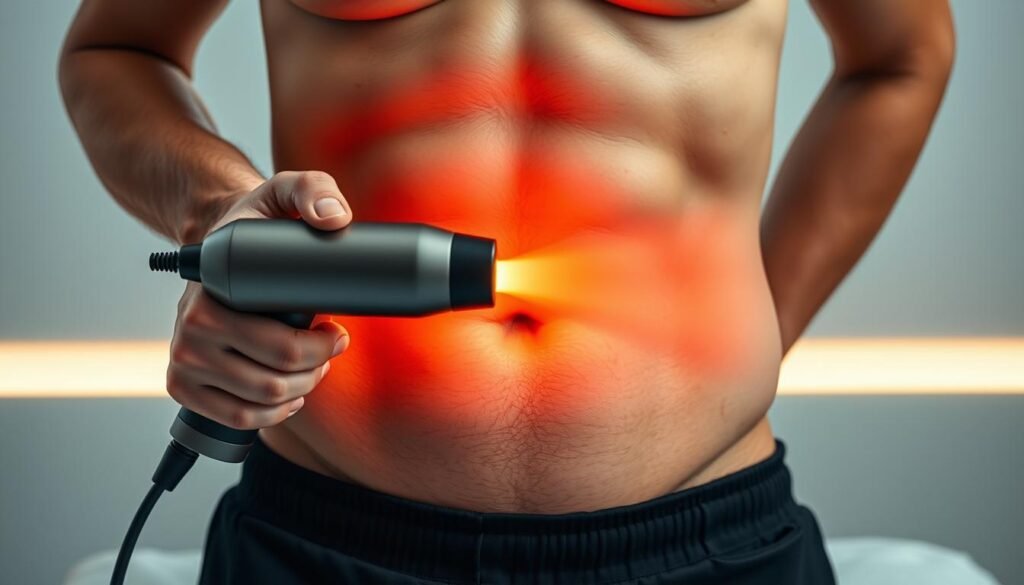
Think of your body as a finely tuned instrument – sometimes it needs precise tuning rather than brute force. Percussive devices operate like hyper-focused drummers, delivering rapid taps that travel 10-16 millimeters deep into soft tissues. This isn’t random pounding; it’s calculated rhythm designed to disrupt tension patterns.
Mechanics of Percussive Therapy
These tools use micro-pulses that mimic professional massage techniques at 20-40 beats per second. Imagine a woodpecker with a PhD in kinesiology – each tap triggers cellular responses that increase oxygen delivery to muscle fibers. The result? Tissues release built-up lactic acid like overstuffed suitcases finally unpacking.
Impact on Abdominal Muscles and Digestion
Your core isn’t just for show – it’s a complex web of muscles guarding vital systems. Gentle percussion here acts like a reset button:
- Stimulates dormant nerve pathways linked to digestion
- Encourages diaphragmatic movement for better oxygen exchange
- Promotes fluid movement through lymphatic channels
One study showed a 31% increase in localized blood flow after 90 seconds of proper application. But remember: Your midsection prefers jazz hands over hammer fists. Overdo it, and you’ll turn therapeutic vibrations into an unwelcome mosh pit for your organs.
How to Safely Use a Massage Gun on Stomach
Navigating abdominal recovery tools requires more finesse than a bull in a china shop. We’ve cracked the code on turning percussive devices into precision instruments for your midsection – no demolition crew tactics needed.
Recommended Settings and Attachments
Your device’s attachments aren’t just colorful plastic – they’re your first line of defense. The flat head reigns supreme here, acting like a velvet hammer compared to its spiky cousins. Start at intensity level 1 (yes, that setting does work) and pretend you’re petting a sleeping cat rather than kneading pizza dough.
| Attachment Type | Best Use | Pressure Level |
|---|---|---|
| Flat Head | General abdominal application | Feather-light to moderate |
| Ball | Not recommended | Avoid |
| Fork | Muscle groups only | Never for core |
Dos and Don’ts for Safe Application
Master these rules faster than a TikTok dance trend:
- Do: Glide in clockwise motions – your gut’s natural rhythm
- Don’t: Park the device on one spot like it’s a parking meter
- Do: Limit sessions to 3 minutes max – less is more
- Don’t: Ignore discomfort signals – your body isn’t bluffing
As one sports med specialist quipped: “You want whispers, not shouty caps-lock vibrations.” When done right, you’ll feel gentle warmth, not wrestling match aftermath. Remember – this isn’t arm day. Your core prefers subtle persuasion over brute-force negotiations.
Techniques and Best Practices for Abdominal Massage
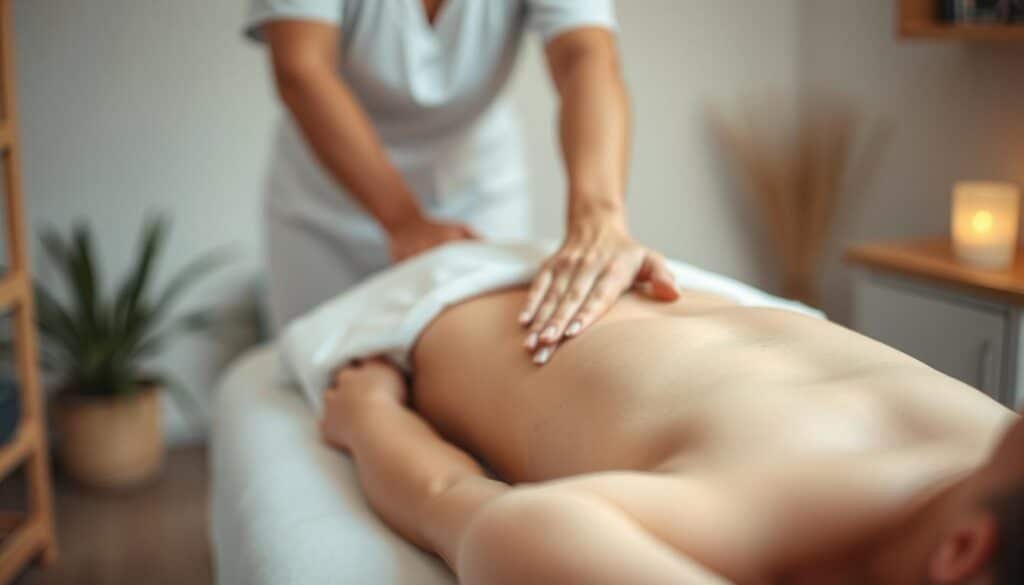
Mastering abdominal therapy is like learning to whisk eggs – looks simple but requires finesse. We’ve cracked the code on transforming percussive devices into precision tools for your core, blending science with street-smart strategies.
Step-by-Step Usage Instructions
Follow this blueprint smoother than a TikTok tutorial:
- Start lying flat with knees bent – think relaxed naptime pose
- Glide the device clockwise using the flat attachment – mimic soup stirring
- Pause 3 seconds per area – like checking a ripe avocado
- Finish with upward strokes below ribs – imagine unzipping a tight jacket
| Technique | Purpose | Duration | Pressure Level |
|---|---|---|---|
| Circular Glides | Digestive stimulation | 90 seconds | Feather-light |
| Vertical Strokes | Muscle tension relief | 60 seconds | Moderate |
| Pulsed Holds | Nerve calming | 30 seconds | Subtle |
Proper Movement and Pressure Tips
Your core deserves better than brute force. Treat it like conducting an orchestra:
- Maintain device weight – let gravity assist rather than push
- Breathe diaphragmatically – sync movements with inhales/exhales
- Rotate hips slightly – creates natural tension release
One physio guru told us: “Good technique feels like a cat walking on your belly – purposeful but never crushing.” Remember – your body whispers before it screams. Tune in, and you’ll unlock benefits that last longer than New Year’s resolutions.
Recognizing the Benefits for Digestion, Circulation, and Recovery
Ever wonder if your recovery tool could moonlight as a digestion ally? Our experiments revealed surprising perks when used smarter than a caffeinated squirrel. The real magic happens when science meets strategy – your body’s inner workings get VIP treatment without the drama.
Improved Blood Flow and Lymphatic Drainage
Your circulatory system throws a silent party when approached right. Gentle pulses become red blood cell Uber drivers, delivering oxygen parcels 31% faster according to recent studies. Lymph nodes start draining toxins like overachieving bartenders during last call – no kale smoothies required.
The benefits stack up quicker than pancakes at brunch:
- Gut rhythm reset: Clockwise motions help move food faster than a teenager fleeing chores
- Capillary boost: Enhanced circulation eases cramps better than heated arguments with gravity
- Detox domino effect: Lymphatic flow clears waste like Marie Kondo organizing your cells
One nutritionist joked: “It’s like giving your insides a standing ovation – everything works smoother backstage.” While weight management becomes easier than resisting free office donuts, remember – these perks only stick around when technique stays sharper than a chef’s knife.
Potential Risks and Precautions for Abdominal Massage
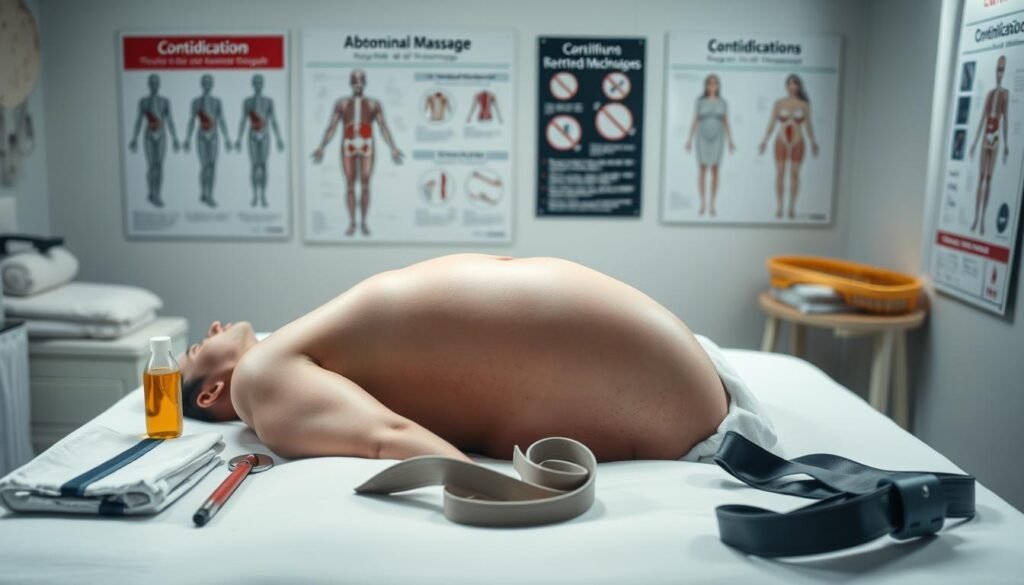
Not every wellness trend deserves a front-row seat in your routine. While percussive devices offer benefits, some scenarios demand more caution than a toddler holding a permanent marker. Let’s explore the red flags that require hitting pause.
When to Press Pause
Your midsection isn’t always game for vibrations. Certain health conditions turn this practice from helpful to hazardous faster than a dropped ice cream cone. Chronic digestive issues like Crohn’s or colitis? That’s your body’s equivalent of a “Do Not Disturb” sign.
| Condition | Precaution | Alternative |
|---|---|---|
| Active IBD | Avoid using percussive devices | Warm compress |
| Pregnancy | Skip abdominal application | Prenatal yoga |
| Recent Surgery | Wait 6-8 weeks minimum | Breathing exercises |
| Acute Pain | Stop immediately | Medical consultation |
| Hernias | Never apply pressure | Physical therapy |
Smart Users Ask Experts
When in doubt, channel your inner detective and consult professionals. One gastroenterologist told us: “Your gut isn’t a DIY project during flare-ups.” Persistent discomfort or unexplained pain? That’s your cue to swap home experiments for clinical advice.
Post-surgery folks should treat their recovery timeline like a Netflix spoiler alert – no peeking ahead. And for expectant parents? Those tiny kicks are cute, but external vibrations could crash the party. Remember: Wellness wins happen when we respect our body’s boundaries.
Integrating Massage Guns into Our Daily Wellness Routine

Morning routines could use more sparkle than your average toothpaste commercial. We’re decoding how to blend percussive therapy into your day without turning it into another chore. Think of it as the seasoning that enhances life’s main dish rather than overpowering it.
The Power Trio: Movement, Fuel, Recovery
Your percussive tool becomes most effective when paired with:
- Protein-rich snacks that rebuild muscles smarter than LEGO masterbuilders
- Hydration habits that keep cells plump like happy grapes
- Stretching sequences flowing smoother than jazz improv
One nutrition coach told us: “Recovery devices are the cherry on top – not the whole sundae.” For best results, sync sessions with post-workout windows when muscles eagerly absorb therapy like sun-warmed earth after rain.
Rhythm Matters More Than Rigid Schedules
Timing these sessions works better as art than science:
| Goal | Ideal Timing | Duration |
|---|---|---|
| Pre-Workout | 5 minutes before | Light activation |
| Recovery Boost | 20 minutes after | Focused areas |
| Stress Relief | Evening wind-down | Full-body flow |
While using percussion therapy on legs follows different rules, abdominal application thrives on consistency over intensity. Most users find 3-4 weekly sessions deliver results without feeling like a part-time job.
Remember – the best routine disappears into your life like salt in soup. When your wellness habits feel as natural as breathing, you’ve nailed the integration game.
Conclusion
Wellness innovation meets common sense in this final chapter. When approached like a velvet glove rather than a sledgehammer, percussive tools can unlock surprising benefits – smoother digestion, eased muscle tension, and revitalized blood circulation. But let’s be clear: Your midsection isn’t a stress ball for aggressive experimentation.
We’ve armed you with science-backed strategies that separate savvy users from cautionary tales. Remember: Gentle vibrations work best when paired with feather-light pressure and clockwise motions. Those with existing health conditions? Your golden ticket remains professional guidance – no shortcuts.
Think of this practice as the Swiss Army knife in your wellness toolkit. It complements stretching and nutrition but shouldn’t replace medical advice. Ready to buzz smarter? Your abdominal area will thank you – provided you treat it like fine china rather than a drum set.
Here’s our parting wisdom: Innovate responsibly, listen to your body’s whispers, and keep that intensity dial conservative. Your future self will toast to choices that blend curiosity with care.

